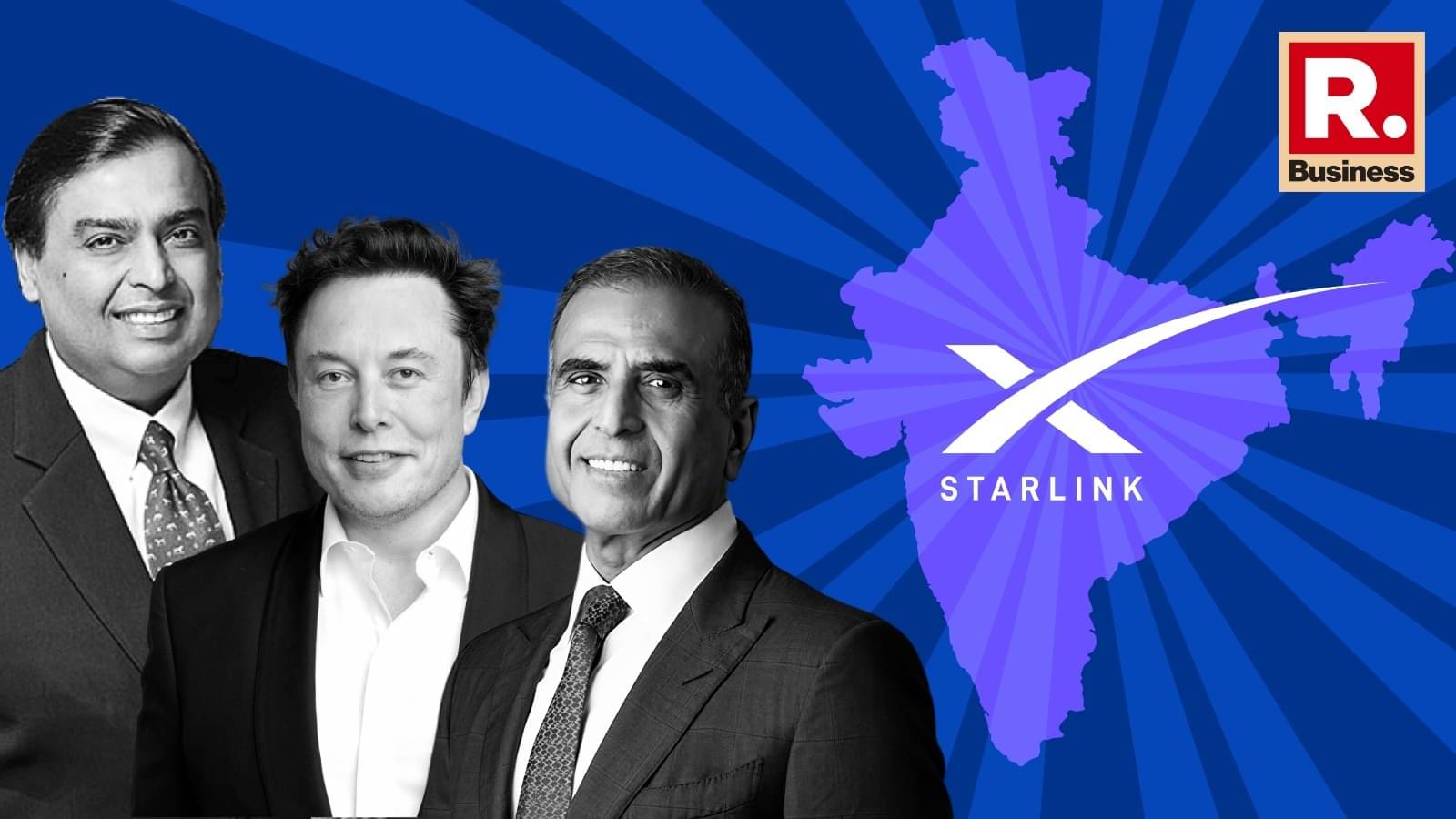Starlink’s Entry In India | Image:
Republic
The last two days in India’s telecom market have been nothing short of groundbreaking, showcasing a strategic shift in response to global geopolitical shifts. The recent Starlink agreements with Airtel and Jio epitomize these changing dynamics. Once critics, India’s two telecom giants are now SpaceX’s best friends, forging a partnership that marks a new chapter in India’s satellite internet area.
On Tuesday, Airtel made waves with a joint statement alongside SpaceX, unveiling plans to launch Starlink’s high-speed internet services across India. Just hours later, Jio followed suit with a similar announcement, signalling a shift toward satellite-driven connectivity. This partnership, once fraught with tension and scepticism, has seen its fair share of highs and lows. From being viewed as a disruptive force to now becoming an essential player, it’s a clear sign of the evolving industry dynamics.
“I believe this collaboration is a clear example of Jio and Airtel adjusting their strategies in response to the changing geopolitical landscape,” said V Raghunandan, former Secretary of the Telecom Regulatory Authority of India (TRAI). “They couldn’t afford to miss out on the best available technology, and this partnership offers a win-win situation for both sides.”
Just a few months ago, Mukesh Ambani expressed concerns about the potential reach of Starlink, particularly in relation to satellite spectrum distribution. Meanwhile, Sunil Bharti Mittal of Airtel had emphasized the need for a level playing field between traditional telecom companies and emerging satellite players, stressing the importance of equal spectrum access and regulatory compliance.
Fast forward to March 10, 2025, and the landscape has drastically shifted. The two telecom titans, once hesitant about SpaceX’s potential entry into the Indian market, are now competing to benefit from Starlink’s high-speed internet offerings.
“The entry of satellite communication, particularly Starlink, will help bridge the digital divide in India,” said Lt. Gen AK Bhatt, Director of the Indian Space Association. “Starlink’s services will bring down costs and reach areas where laying fiber is logistically challenging, such as Leh and Ladakh.”
As of December 2024, Jio’s broadband subscriber base was 476.58 million, followed by Airtel with 289.31 million. Despite a total of 843 million internet users in 2024, about 35% of India’s population still lacks reliable internet access. Starlink sees this as a crucial market to target, offering affordable solutions to connect underserved areas.
“Starlink brings cutting-edge satellite communication technology, and its capacity is unparalleled. This partnership will see customers migrating toward Starlink as it offers the best bandwidth in the world,” Raghunandan explained.
The Battle for Satellite Connectivity
The competition for satellite-based connectivity in India has been underway for some time. Back in February 2022, Jio partnered with Luxembourg-based SES to offer broadband services through satellites. This collaboration, known as Jio Space, combines geostationary (GEO) and medium Earth orbit (MEO) satellites. Airtel, on the other hand, holds a 21% stake in Eutelsat OneWeb, a GEO-MEO integrated satellite venture.
While companies like SES and OneWeb are operating in low Earth orbit (LEO) and MEO, Starlink stands apart due to its remarkable capacity. “Starlink has the best satellite capacity in the world,” Raghunandan noted, highlighting the sheer scale of Starlink’s ambitions.

With around 6,500 satellites currently in orbit, Starlink plans to launch up to 42,000 satellites soon, creating a massive ‘mega constellation.’ In comparison, Jio’s partner SES operates with a network of about 70 satellites, and Airtel’s ally Eutelsat OneWeb has around 630 satellites.
Starlink’s Starry Internet
Starlink, with its global presence in over 100 countries, is not just known for offering high-speed internet but also for its advanced technology and cost-effective satellite launches. But what truly sets Starlink apart is its ability to provide ultra-low latency and high-speed connectivity, which other satellite networks struggle to achieve.
Understanding the mechanics of satellite communication is key to appreciating Starlink’s edge. Satellites typically operate in three orbits: Low Earth Orbit (LEO), Medium Earth Orbit (MEO), and Geostationary Earth Orbit (GEO). LEO, where Starlink’s satellites are positioned, is closest to the Earth, at altitudes between 500 and 1,200 km. In contrast, MEO and GEO satellites operate at much higher altitudes, resulting in higher latency.
“Most satellite internet services come from geostationary satellites, which orbit at 35,786 km. The data’s round trip causes high latency, making it unsuitable for high-bandwidth activities like streaming, gaming, and video calls,” explained Bhatt from the Indian Space Association. Starlink, by operating in LEO, minimizes latency to just 25 milliseconds, compared to the 600+ milliseconds seen with GEO satellites. This low latency, combined with Starlink’s immense capacity, gives it a significant edge over its competitors.
Additionally, SpaceX’s ability to launch its own satellites at low cost enables Starlink to constantly upgrade its technology, ensuring that it remains ahead of the curve in terms of satellite communication.

